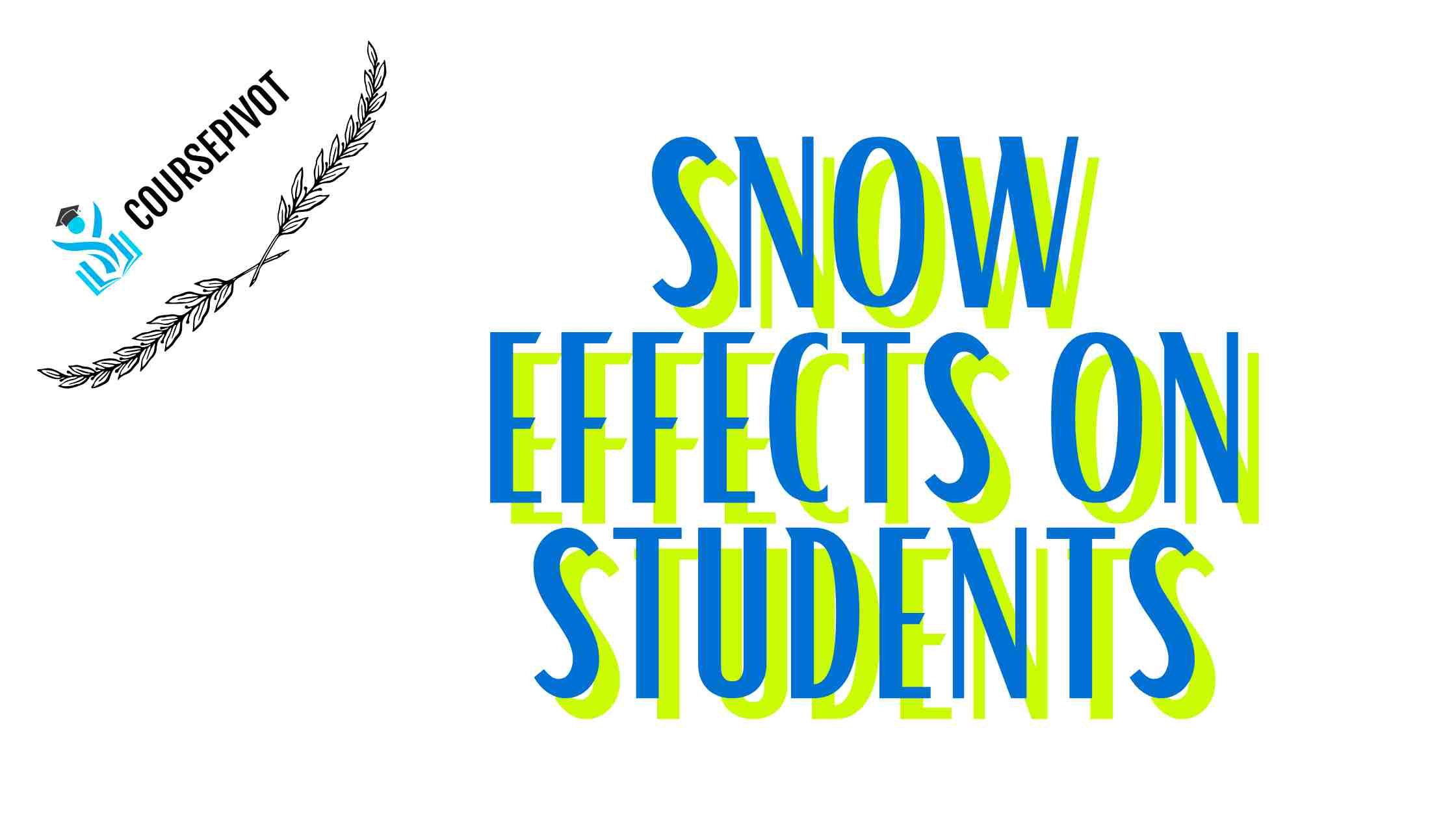How Snow Days Affect Students in Different Communities

When snowflakes begin to fall and school closings start flashing across local news stations, many students celebrate an unexpected break from class. But while snow days often bring excitement and cozy memories of sledding and hot cocoa, the reality is that they affect students very differently depending on where they live, their family situations, and the resources available in their community.
So, when asking, “How Might Snow Days Affect Students in Different Communities in Different Ways?” there are many possible answers.
Effects of Snow Days on Students and Education
Let’s explore how snow days can shape student experiences in both positive and challenging ways.
- 1. Access to Technology and Remote Learning
In some school districts, especially in well-funded suburban or urban areas, snow days no longer mean a total pause in learning. Thanks to laptops, tablets, and reliable internet, many schools can quickly switch to virtual classrooms, minimizing the disruption to students’ education.
But in lower-income or rural communities, reliable internet access isn’t always guaranteed. Some students may not have computers at home, while others might share a single device with multiple family members. For these students, snow days can cause real gaps in learning — especially if the weather stretches into multiple days of closures.
- 2. Food and Nutrition Needs
For many students, especially in under-resourced areas, school is more than just a place for learning — it’s also a reliable source of nutritious meals. When snow days close schools, these students may miss out on breakfast and lunch, which can create added stress for families trying to make ends meet.
Communities with strong support networks or food distribution plans might soften the blow, but others struggle to fill the gap. This is one of the lesser-discussed but significant ways snow days affect students differently.
- 3. Parental Supervision and Work Flexibility
In some households, snow days mean family fun and quality time — parents may have the flexibility to work from home or take the day off. But for many families, especially those with hourly jobs or essential roles, snow days create childcare emergencies. Parents might have to scramble for last-minute babysitters, leave older siblings in charge, or even miss work (and wages) altogether.
This difference highlights how snow days can be a relaxing break for some children but a source of stress and uncertainty for others.
- 4. Academic Catch-Up and School Resources
Not all schools handle missed days the same way. Wealthier districts might offer make-up days, provide online resources, or even extend the school year. In contrast, underfunded schools may have fewer options for recovering lost instruction time, which can widen the achievement gap between students in different communities.
For students already struggling with their studies, even a few missed days can make a noticeable difference.
- 5. Community Safety and Home Environment
While snow days are often pictured as peaceful days spent indoors, that’s not the reality for every child. Some students live in unsafe neighborhoods or unstable home environments where school serves as both a safe space and a support system. For these students, snow days can mean isolation or even exposure to unsafe situations.
On the other hand, in tight-knit communities where neighbors check in on one another, snow days can also foster community connection and mutual support.
At first glance, a snow day may seem like a universal childhood delight — but the truth is more complicated. From differences in home internet access to gaps in nutrition and parental support, the impact of snow days varies widely from one community to another.
Understanding these differences is an important step in building more equitable systems for all students, both in times of crisis and beyond.
How to Stay Safe on Snow Days: Simple Tips for Cold Weather Safety
Snow days can be a lot of fun — from building snowmen to sledding and sipping hot cocoa. But winter weather also brings real risks, especially when snow, ice, and freezing temperatures create dangerous conditions.
Whether you’re a student, parent, or just someone enjoying a day off, here are some smart safety tips to help you stay safe and make the most of your snow day!
- Dress Warmly and in Layers
Cold temperatures can cause frostbite or hypothermia faster than you think — especially if your clothes get wet.
When heading outdoors:
- Wear warm, waterproof boots.
- Dress in layers (base layer, sweater, waterproof jacket).
- Use gloves or mittens, a scarf, and a hat.
- Avoid staying out too long, especially if temperatures are dangerously low.
- Be Careful on Roads and Sidewalks
Snow and ice make roads and sidewalks slippery, increasing the risk of falls and car accidents.
- Avoid unnecessary driving during snowstorms.
- If you must drive, go slow, use your headlights, and leave extra space between vehicles.
- When walking, wear boots with good grip and take short, careful steps.
- Watch out for black ice — it’s hard to see and extra slippery.
- Be Prepared for Power Outages
Heavy snow and ice can knock down power lines.
Prepare by:
- Charging phones and devices ahead of time.
- Having flashlights and extra batteries on hand.
- Keeping extra blankets and warm clothes nearby.
- Avoid using candles unsupervised to prevent fire risk.
- Stay Warm Inside
If the heat goes out or temperatures drop, it’s important to stay warm:
- Close off unused rooms to trap heat.
- Use space heaters safely, keeping them away from anything flammable.
- Never use a gas oven or grill indoors for heat — it can cause carbon monoxide poisoning.
- Shovel Snow Safely
Shoveling snow is hard work and can strain your body — especially in freezing weather.
- Stretch before starting.
- Push snow rather than lifting it when possible.
- Take breaks to avoid overexertion.
- Drink water even if you don’t feel thirsty.
- Stay Informed
Winter weather can change fast.
- Check local news, weather apps, or school alerts for updates.
- Follow advice from your city or town about road closures and safety warnings.
- Let friends or family know if you’re going out during severe weather.
- Snow Days Can Be Safe Days
A snow day can be both fun and relaxing — as long as you stay alert and prepared. Dressing smart, avoiding risky travel, and staying warm are the best ways to keep the day safe for you and your family.
Stay cozy, stay connected, and stay safe!
Cite this article
You can copy and paste your preferred citation format below.
Martin, L. & Arquette, E.. (2025, April 19). How Snow Days Affect Students in Different Communities. Coursepivot.com. https://coursepivot.com/blog/how-snow-days-affect-students-in-different-communities/



